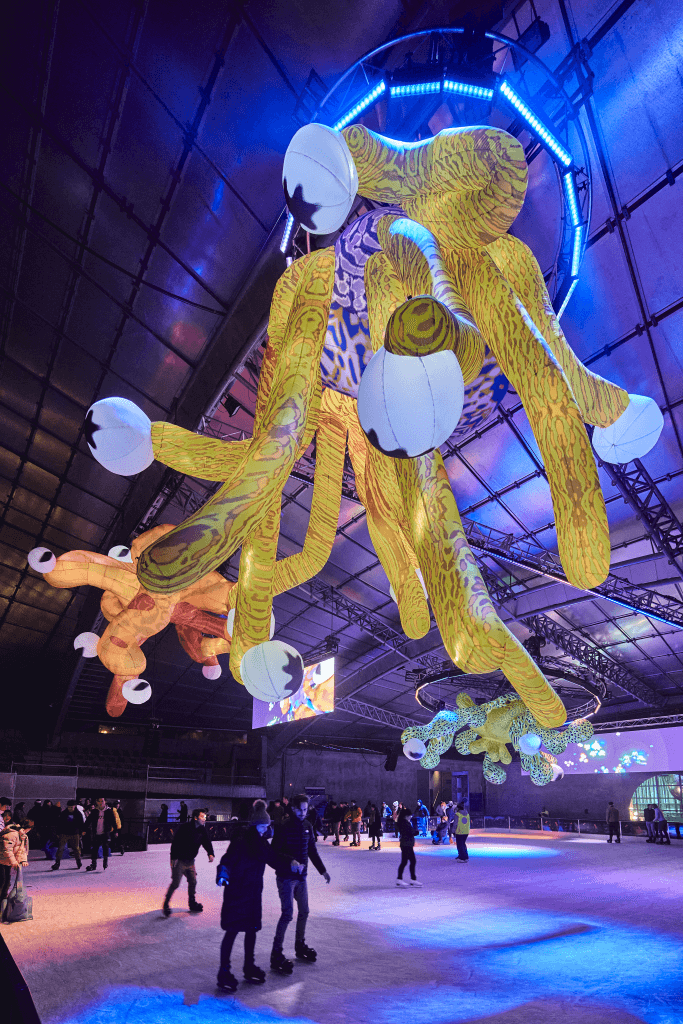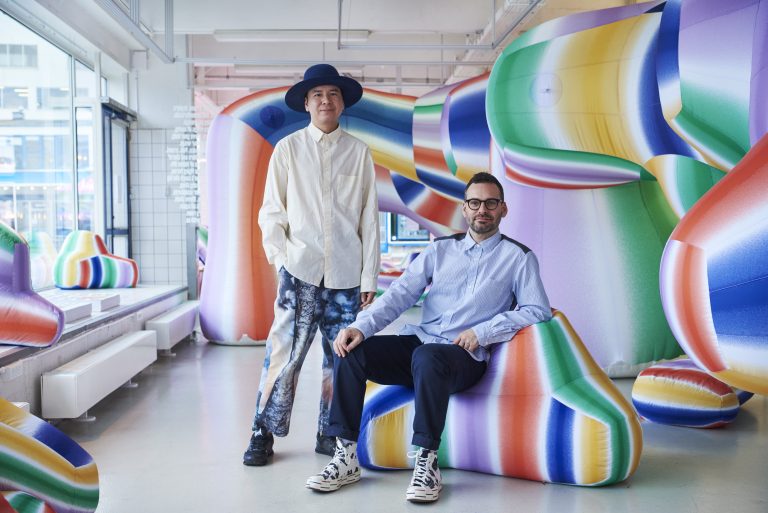We met with Tin Nguyen and Edward Cutting, Australian artists and creative technologists based in New York, to talk about their playful installations, the borderless dimension between art and science, the physical and the digital, the human and the more-than-human.

Multitudes (installation view), 2022
Photography by PETER BENNETTS
hube: It seems that you move easily between physical and digital worlds. You’re placing real objects in digital space and recreating digital artworks in the real world. By frequently crossing this border, we seem to erase it. In your opinion: how long will the division between real and digital last? Will it stay with us forever or will it disappear one day?
Tin&Ed: We believe the boundary between physical and digital space is permeable, where these two worlds meet is interesting to us. The real world for us encompasses both physical and digital spaces, they’re completely interconnected. The thought of existing fully in digital space is terrifying to us, we believe it could be destructive to use digital space as a way to escape our physical reality, we need to remember that we are physical beings connected to all other living things and the planet. This is why we’re interested in augmented reality (AR), it allows the infinite possibilities of the digital world whilst still being anchored in our physical reality. We hope the future exists in a hybrid space, bringing together the best of both worlds.
h: Even though you are creating new forms of physicality for digital spaces, you still connect them to real human proportions that are not required in the digital world. How far are you willing to experiment with the body? What limitations do you see now?
T&E: The body is an important starting point for exploration, it is what we use to experience and sense the world around us. We’re also limited by our senses, so we often forget that the world exists beyond what we can perceive. Technology can open up what we can perceive and understand. With the help of microscopes and telescopes and other technologies we understand that time and space are relative. Compared to a galaxy we are tiny and insignificant, to a bacteria living in our gut we are the whole universe, our bodies are ecosystems made up of trillions of microbes, there are more bacteria within our bodies than there are human cells. Exploring how our bodies are entangled with other bodies both human or more-than-human is both fun and completely limitless.

